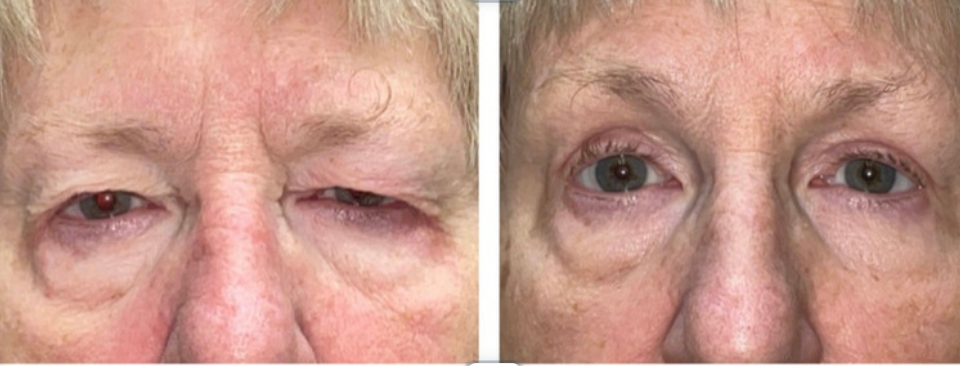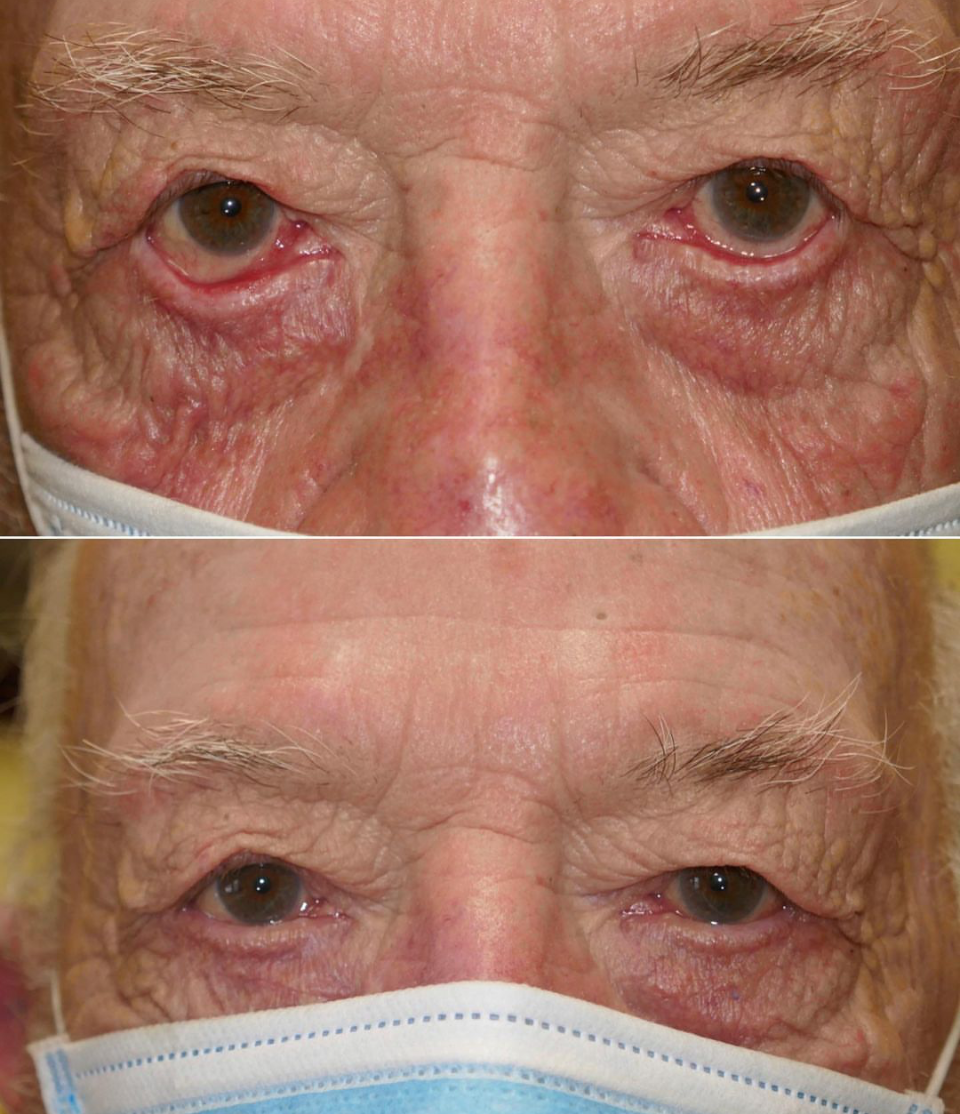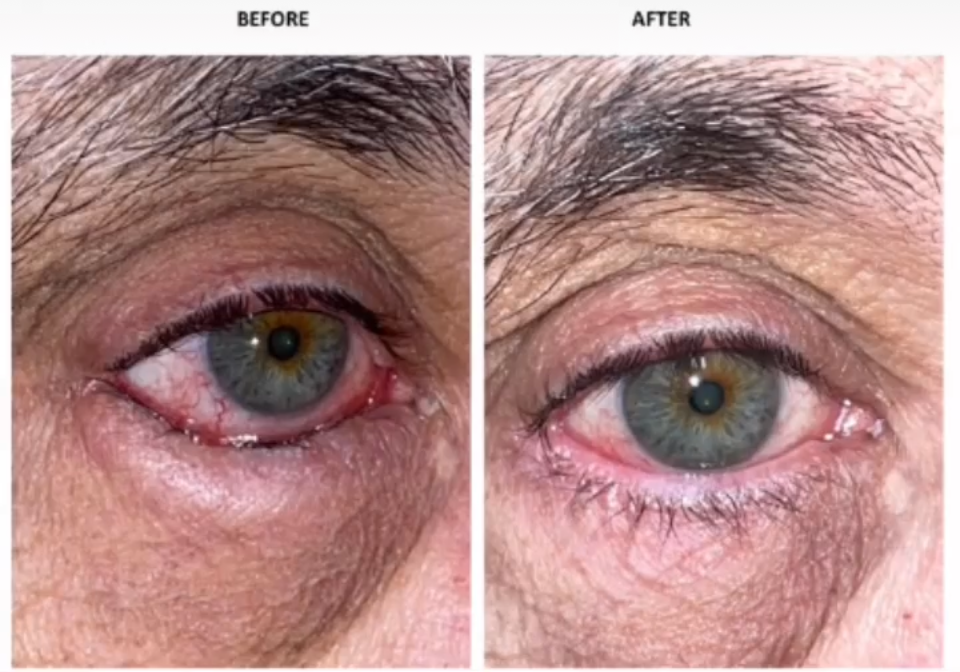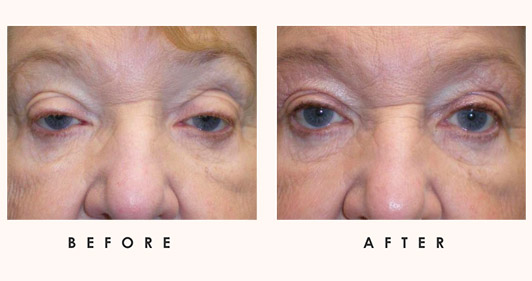Eyelid Laxity
Jump To

Introduction
Eyelid laxity results when the skin around the eyelids becomes loose. Over time, the shape, position, and function of the eyelids can change and result in this sagginess. Sometimes, eyelid laxity can interfere with vision. Our eyelids are complex structures consisting of an anterior layer with the skin and orbicularis muscle; a middle layer with the orbital septum and eyelid retractors; and a posterior layer with the tarsus and conjunctiva.
Eyelid malposition results when any unnatural or incorrect positioning impacts any of the three layers of the eyelids. Possible causes include aging, trauma, scarring, birth defects or medical disease involving any or all of the three layers. The most common forms of eyelid malposition are eyelid retraction, ptosis, entropion and ectropion.
Types of Eyelid Malpositions
Both upper and lower eyelid malpositions can present problems. Upper eyelid malpositions include upper eyelid ptosis (drooping down of upper eyelid), retraction of the upper eyelid (causing apparently bulging eyes), entropion (in-turning of eyelid and lash line), and ectroprion (out-turning of the eyelid). For the lower eyelids, malpositions include retraction of the lower eyelid (lid margin below inferior limbus), entroprion (inward rotation of the eyelid margin), and ectropion (outward rotation of the eyelid margin).
Common Consequences of Eyelid Malpositions
Eyelid malpositions can result in a number of problems. Some of the more common medical conditions at Idaho Eyelid and Facial Plastic Surgery include:
- Decreased vision due to blockage of visual axis by the malpositioned eyelid or secondary corneal ulcer formation.
- Eye irritation due to an eyelash rubbing the cornea or the conjunctiva.
- Corneal ulceration due to repeated rubbing of corneal surface by the eyelashes or eyelid margin.
- Corneal/conjunctival dryness due to exposure leading to irritation, discomfort, keratitis or corneal ulcer.
- Repeated infections of the lachrymal sac due to a blocked punctum.
Common Symptoms Associated With Eyelid Malpositions
Common symptoms of eyelid malposition include dry eyes, pain, excessive tearing, and irritation. Other symptoms can include disfigurement of the eyes, corneal ulcers, and photophobia. Decreased vision due to visual axis blockage by eyelids is also possible.
Evaluation and treatment of eyelid malpositions should be disease-specific and tailored to the patient’s needs. This requires consultation with an eye surgeon familiar with treating various eyelid malpositions. Idaho Eyelid and Facial Plastic Surgery has extensive experience in both upper and lower eyelid malpositions.
Eyelid Positional Disorders
Ectropion and entropion are eyelid positions disorders:
- Ectropion is the medical term used to illustrate sagging and outward turning of the lower eyelid and eyelashes. The margin of the eyelid and the eyelashes revert (turn out). This can be uncomfortable if left untreated. It can lead to excessive tearing, crusting of the eyelid, mucous discharge and irritation of the eye.

- Entropion is the medical term used to explain the inward turning of the lower eyelid and eyelashes: the margin of the eyelid and the eyelashes invert (turn in). This rubbing can lead to excessive tearing, crusting of the eyelid, mucous discharge and irritation of the eye.

Eyelash Disorders
Trichiasis is an eyelash disorder characterized by misdirected or abnormally positioned eyelashes. Trichiasis is sometimes caused by entropion and causes discomfort/irritation to the eye. It can result in permanent damage to the cornea and vision loss.



